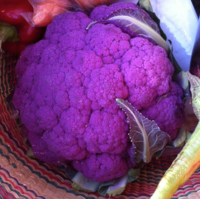
Photo from wikipedia
BackgroundHeat shock proteins (HSPs) are found extensively in Eukaryotes and are involved in stress tolerance. However, their functions in herbaceous peony (Paeonia lactiflora Pall.) under high temperature stress are poorly… Click to show full abstract
BackgroundHeat shock proteins (HSPs) are found extensively in Eukaryotes and are involved in stress tolerance. However, their functions in herbaceous peony (Paeonia lactiflora Pall.) under high temperature stress are poorly characterized.ResultsIn this study, the genomic sequence of P. lactiflora HSP70, designated PlHSP70, was isolated. Its full-length was 3635 bp, and it contained a large 1440-bp intron. The encoded protein with a molecular weight of 71 kDa was localized in the cytoplasm of the cell. PlHSP70 transcription was detected in P. lactiflora and increased with the treatment of high temperature stress. The constitutive overexpression of PlHSP70 in Arabidopsis thaliana obviously conferred tolerance to high temperature stress by affecting different physiological and biochemical indices. Transgenic A. thaliana plants exhibited higher chlorophyll fluorescence values than the wild-type (WT) when exposed to high temperature stress. The accumulation of hydrogen peroxide (H2O2), superoxide anion free radical (O2·-) and relative electric conductivity (REC) were significantly lower in the transgenic A. thaliana plants compared to the WT. In addition, more intact cell membranes, chloroplasts and starch grains, and fewer plastoglobuli were found in the PlHSP70-overexpressing transgenic lines than in the WT.ConclusionsAll of these results indicated that PlHSP70 possessed the ability to improve the tolerance to high temperature in transgenic A. thaliana, which could provide a theoretical basis to improve high temperature tolerance of P. lactiflora by future genetic manipulation.
Journal Title: BMC Genomics
Year Published: 2019
Link to full text (if available)
Share on Social Media: Sign Up to like & get
recommendations!